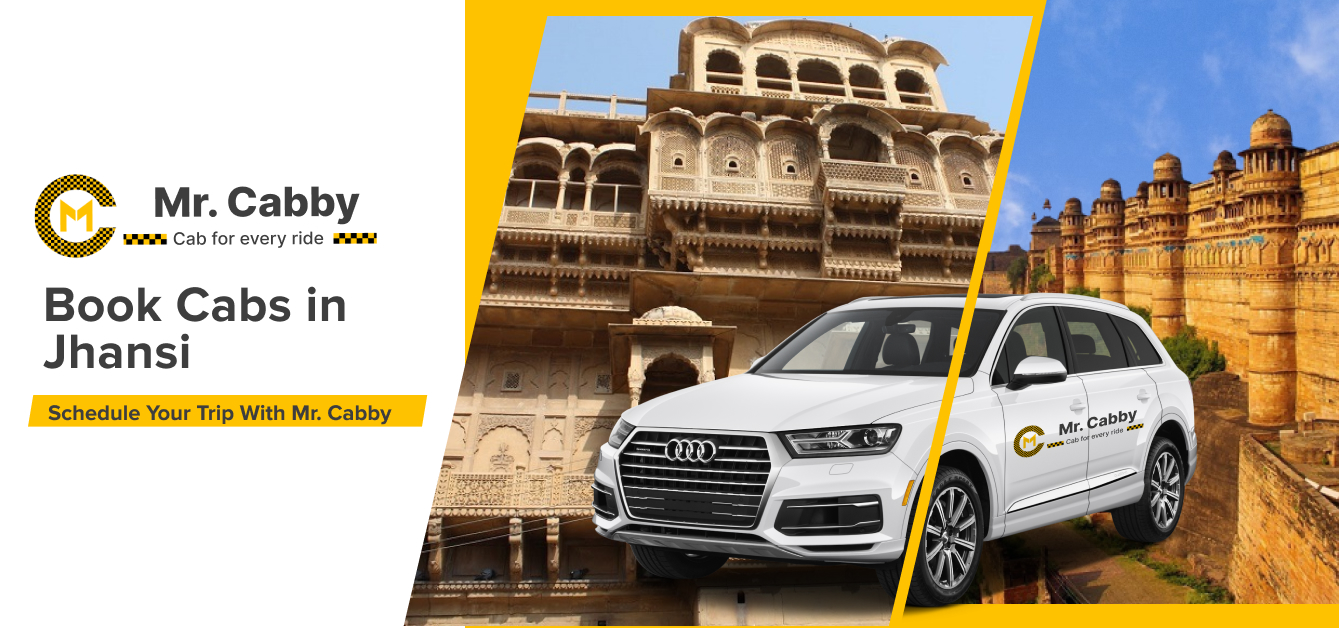Know About Jhansi, MrCabby offers Cab Hire services in Jhansi with Driver, Tourist Places by Taxi Booking in Jhansi
Know About Jhansi City, MrCabby offers Cab Hire services in Jhansi with Driver, Tourist Places by Taxi Booking
Know about Jhansi City:
Jhansi city, situated between the rivers Pahunj and Betwa is a symbol of bravery, courage and self respect. It is said that in ancient times Jhansi was a part of the regions Chedi Rashtra, Jejak Bhukit, Jajhoti and Bundelkhand. Jhansi was a stronghold of the Chandela kings. Balwant Nagar was the name of this place. But on the 11th. century Jhansi lost its importance. On the 17th. century under Raja Bir Singh Deo of Orchha Jhansi again rose to prominence. Raja Bir Singh Deo had good relations with the mughal emperor Jehangir. In 1613 Raja Bir Singh Deo constructed the Jhansi fort. He died in 1627. After his death his son Jujhar Singh succeeded him. Maharaja Chattrasal Bundela of Panna was a good administrator and a brave warrior. In 1729 Mohammed Khan Bangash attacked Chhatrasal. Peshwa Baji Rao (I ) helped Maharaja Chhatrasal and defeated the mughal army. As a mark of gratitude Maharaja Chhatrasal offered a part of his state to Maratha Peshwa Baji Rao(I). Jhansi was also included in this part. In 1742 Naroshanker was made the subedar of Jhansi. During his tenure of 15 years he not only extended the Jhansi fort which was of strategic importance but also constructed some other buildings. The extended part of the fort is called Shankargarh. In 1757 Naroshanker was called back by the Peshwa. After him Madhav Govind Kakirde and then Babulal Kanahai were made the subedars of Jhansi.
Places to visit in Jhansi By Hire cab with MrCabby:
-
Jhansi Fort
Located in the heart of Jhansi city, the Jhansi Fort was one of the most important centres of resistance to the British colonial rule during the Revolt of 1857. It is this aura that surrounds the grand fort and draws thousands of visitors to Jhansi each year. It was built by Raja Bir Singh Ju Deo (1606-27) of Orchha on a rocky hill called Bhangra in the town of Balwant Nagar (presently known as Jhansi). The fort has ten gates ( Darwaza). Some of these are Khanderao Gate, DatiaDarwaza, Unnao gate, Jharna Gate, Laxmi Gate, Sagar Gate, Orchha Gate, Sainyar Gate, Chand Gate.
-
Samthar Fort
Once the seat of a powerful princely state, Samthar – 60 km north of Jhansi – is best known for its magnificent fort, a spectacular amalgamation of Bundelkhandi and French architecture. The origins of the fortification here can be traced to the 16th century, when Samsher Khan, a Subedar or Governor of Mughal Emperor Babur (r. 1526 – 1530 CE), was stationed at nearby Erach (23 km away). He is said to have built a small fort or garhi and named it ‘Shamsher Garh’, after himself. The fort was used as a small check-post of the Mughals and later became part of the Bundela kingdom of Datia.
-
Padma Bhushan Major Dhyan Chand
Although born in Allahabad, owing to his father’s numerous army transfers, Dhyanchand finally settled in Jhansi, Uttar Pradesh, India after six years of schooling. Major Dhyan Chand took Indian hockey to soaring heights at the global level. He is widely regarded as one of the greatest hockey players in history. He was known for his extraordinary ball control and goal-scoring feats, in addition to earning three Olympic gold medals, in 1928, 1932 and 1936, during an era where India dominated in field hockey. His influence extended beyond these victories, as India won the field hockey event in seven out of eight Olympics.
-
Narayan Bagh
The government gardens are located in Narayan Bagh area. The park is host to numerous species of plants. Colourful flowers can be seen in full bloom during their respective seasons. Some very old trees can also be seen in the park. It is a favourite spot for morning walkers and nature lovers. People come here from far corners of the city for walking and exercises. An annual exhibition of vegetables, fruits and flowers is organised here every February.
-
Sukma Dukma Dam
Known as the Dhukwan Dam, or the Sukma Dukma Dam, this British-era dam is built on the Betwa River, a tributary of Yamuna. Taking its name from the village of Dhukwan, the dam was built between 1905 and 1909, as a secondary dam to Parichha Dam, on the same river. The Parichha and Sukma Dukma dam were the lifelines of the region and are still in use today. They supplied drinking water, water for irrigation and also for the generation of electricity. An interesting feature of the Sukma Dukma Dam is its inspection tunnel underneath. It is said that the tunnel was used in emergencies to cross the river. Visit the dam today, especially during the monsoon, and you will be spellbound by its size and the picturesque greenery that envelopes it.
Hire Cab for Local sightseeing in Jhansi with Local Rental taxi packages:
You can explore our local sightseeing taxi rental packages for Jhansi visit here.
|
Vehicle Type
|
8 HR/80 Kms
|
Extra Km Charges
|
|
Sedan
|
2500 INR*
|
12 INR /Km
|
|
HatchBack
|
2500 INR*
|
12 INR /Km
|
|
Suv
|
4500 INR*
|
17 INR /Km
|
How to contact our 24x7 Travel Desk Manager for Taxi booking in Jhansi?
Reach us on our support number for booking cab in Jhansi at +91- 7510003044
Our book directly from our website www.mrcabby.co.in
